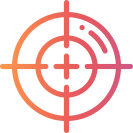ABOUT
VIRAL SIGN

VIRAL SIGN IS ADVANCED SCREENING SCIENCE DESIGNED TO PROVIDE EFFECTIVE AND EFFICIENT SCREENING OF POPULATIONS
The artificial intelligence in Viral Sign equips client organizations to detect individuals infected with COVID-19, and other influenza-like illnesses (ILI) prior to the onset of fever. Viral Sign represents an important tool to help mitigate virus transmission in high-risk settings.
Viral Sign has been deployed into facilities and worksites in the U.S., South America, Middle East, and Europe. Since March of 2020, over 1,000,000 screens have been conducted using Viral Sign.
The Viral Sign algorithm leverages the power of infrared imaging to produce a comprehensive thermal signature of the face. In real-time, Viral Sign assesses the thermal signature across the regions of interest in the face to identify patterns consistent with early, presymptomatic influenza-like illness (ILI). The total time required for Viral Sign to capture the infrared image, evaluate the thermal signature, and provide a result is approximately three seconds.
Viral Sign does not make a medical diagnosis. A medical diagnosis must be made by a licensed healthcare professional.
Viral Sign Offers the Following

Precision
96% accurate with greater sensitivity for the detection of fever and the prefebrile state. Superior to solutions that detect only point temperature (point thermometers) or a single mass temperature (thermal cameras).

Safety
Viral Sign eliminates close contact between the evaluator and the individual being screened.

Speed
Processing speed (<3 seconds) allows the screening process with Viral Sign to be workflow neutral, enabling individuals to get to the job site or destination quickly.

Alarms
Visual and audible alerts inform the evaluator when a virus is suspected in an individual. The audible alerts may be turned off when appropriate for the setting.

Comprehensive
A comprehensive thermal signature produces a result that identifies where there is high suspicion for the presymptomatic presence of virus.

AI-Driven Results
The artificial intelligence in Viral Sign produces a result (Okay, Evaluate, or Risk) that does not require interpretation by the evaluator. The evaluator is not required to be a medical professional.
The screening result with Viral Sign is indicated as “OK” (or low risk), “Evaluate” (medium risk), or “Risk” (high risk). Below, we provide three screen shots illustrating the OK (left), Evaluate (Center), and Risk (Right) result. It is important to note that the facial images are not representative of the full range of images for each risk cohort.





